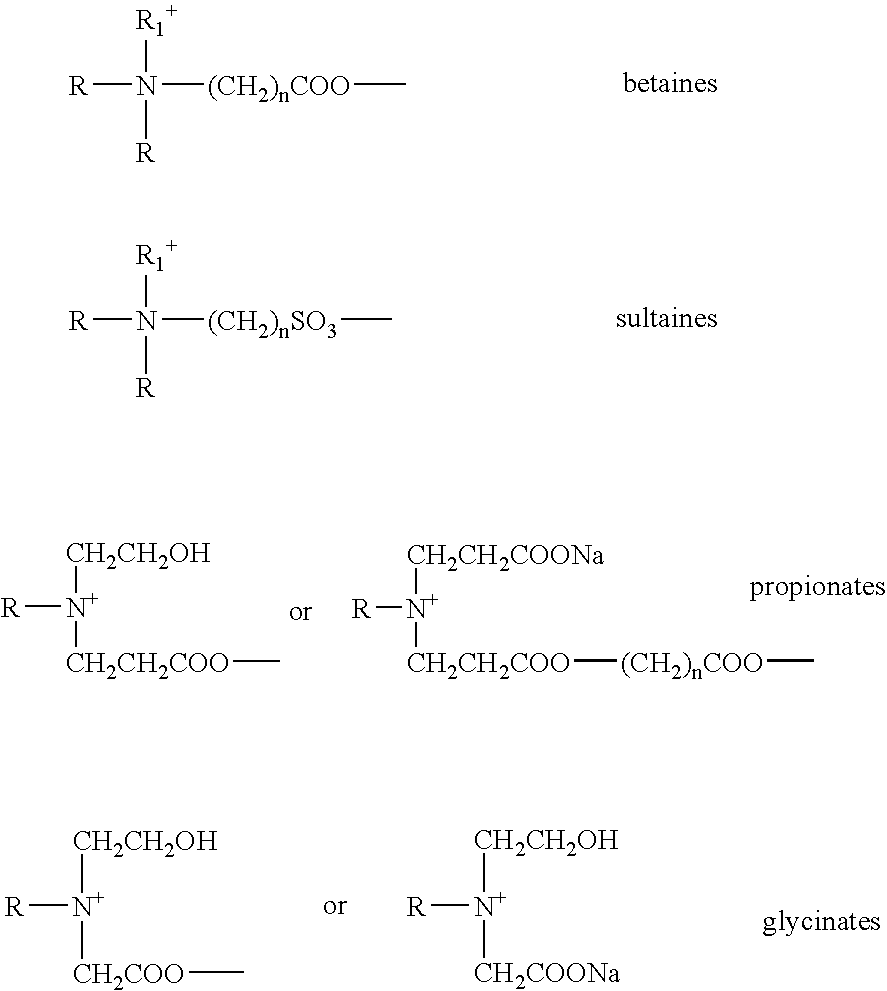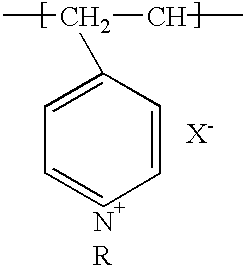Two-part aqueous composition for oxidative coloration of hair
a technology of oxidative coloration and aqueous composition, which is applied in the field of two-part aqueous composition for oxidative coloration of hair, can solve the problems of not providing conditioning, incompatible with anionic surfactants, and less than 50% water in the composition
- Summary
- Abstract
- Description
- Claims
- Application Information
AI Technical Summary
Benefits of technology
Problems solved by technology
Method used
Image
Examples
Embodiment Construction
Dye Base Lotions of this Invention (Formulations A, B, C and D) were Prepared from the Following Ingredients
A further base lotion formulation of this invention (Formulation E) was similarly formulated from the same ingredients as follows:
For comparison purposes a similar lotion formulation (Formulation F), without the Schercoquat 21AP conditioner of this invention present, was prepared from the same ingredients as follows:
As examples of developer solutions useful with the dye lotion formulation of this invention there may be mentioned developer solutions G and H prepared from the following ingredients:
Developer solution G was mixed with each of the three lotions Formulation A, E, and F and each of the resulting mixtures were each applied to bleached hair, piedmont hair and gray hair and color uptake measurements taken on a colorimeter. The shade used was a medium neutral blonde (7N). The Minolta 3700d spectrophotometer employed for the measurements uses reflected light from a surfac...
PUM
| Property | Measurement | Unit |
|---|---|---|
| formulation | aaaaa | aaaaa |
| dyeing time | aaaaa | aaaaa |
| water content | aaaaa | aaaaa |
Abstract
Description
Claims
Application Information
 Login to View More
Login to View More - R&D
- Intellectual Property
- Life Sciences
- Materials
- Tech Scout
- Unparalleled Data Quality
- Higher Quality Content
- 60% Fewer Hallucinations
Browse by: Latest US Patents, China's latest patents, Technical Efficacy Thesaurus, Application Domain, Technology Topic, Popular Technical Reports.
© 2025 PatSnap. All rights reserved.Legal|Privacy policy|Modern Slavery Act Transparency Statement|Sitemap|About US| Contact US: help@patsnap.com



